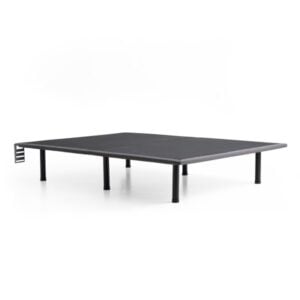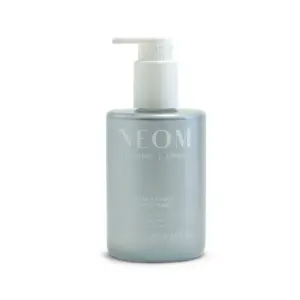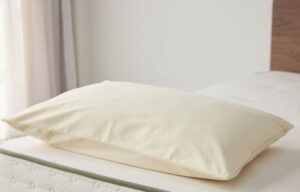The Complete Guide to White Noise vs. Brown Noise for Restorative Sleep
Understanding the Impact of Noise on Sleep
When it comes to enhancing the quality of your sleep, grasping the distinction between white noise and brown noise is imperative. Both play a vital role in masking disruptive sounds, thus promoting restorative sleep, yet their characteristics are markedly different.
Quick Differences
White Noise:
– Sound Profile: High-pitched, staticky
– Frequency Range: Combines all audible frequencies
Examples: TV static, fan noise, vacuum cleaner.
Brown Noise:
– Sound Profile: Deep, bass-heavy
– Frequency Range: Emphasizes low frequencies and minimizes high frequencies
Examples: Rainfall, thunder, crashing waves.
Why It Matters
Quality sleep is essential not only for mental well-being but also for physical health. Sudden disturbances can disrupt your sleep, preventing you from achieving the restorative rest your body craves.
As Ben Trapskin, founder of Yawnder, I understand the struggle with sleep firsthand. This personal experience has driven my commitment to uncovering science-backed solutions, which include exploring the benefits of white noise versus brown noise.
What is White Noise?
White noise consists of a high-pitched, continuous sound generated by combining all audible frequencies. Think of the familiar sounds of TV static or the gentle hum of a ceiling fan.
Characteristics of White Noise
– High-Pitched and Staticky: Resembles the fuzz you hear on a television when it isn’t tuned to a channel.
– All Frequencies: Every frequency accessible to the human ear is present in equal measure, creating a blanket of sound that effectively masks other noises.
– Common Sources: Everyday household items produce white noise, including vacuums, air conditioners, and oscillating fans.
Real-Life Examples
– TV Static: A quintessential example, noise produced when a television is not tuned.
– Fans: The consistent hum helps create a soothing atmosphere, often used to aid sleep.
– Vacuum Cleaners: Offers a consistent auditory backdrop that can drown out more jarring sounds.
– Air Conditioners: Their hum can be comforting and effective in creating a masking effect.
Why Use White Noise?
White noise effectively covers sounds that might wake you, providing a stable auditory environment that minimizes the impact of sudden disruptions.
Benefits Backed by Research
– Improved Sleep Quality: A 2017 study showed that white noise reduced the time needed for participants to fall asleep by 38%, enhancing overall sleep quality.
– Masking Noisy Environments: A 2021 study in New York City found significant improvements in sleep quality among those who reported disturbances due to noise.
– Hospital Settings: Research involving ICU patients indicated that white noise could enhance sleep even in inherently noisy environments.
White noise is especially advantageous for those living in bustling urban settings or sharing space with a snoring partner, providing a serene backdrop for restorative sleep.
What is Brown Noise?
Brown noise is deeper and richer compared to its white counterpart, characterized by naturally soothing sounds such as rainfall, distant thunder, or ocean waves.
Characteristics of Brown Noise
– Deep Sound and Bass Tone: Brown noise emphasizes low-frequency sounds, akin to the bass notes in a musical composition.
– Low-Frequency Sounds: Unlike white noise, brown noise has greater energy in lower frequencies, creating a more calming atmosphere.
Natural Examples
– Rainfall: The steady rhythm of rain falling can be extremely tranquil.
– Thunder: The deep, rolling sound of thunder can evoke a sense of peace and comfort.
– Waves Crashing: The repetitive sound of ocean waves offers a classic example of brown noise’s soothing capabilities.
These sounds resonate with many people, aiding in relaxation, sleep, and even focus.
White Noise vs. Brown Noise: Which is Better for Sleep?
Deciding between white noise and brown noise often comes down to personal preference and individual sleep needs. Let’s examine the unique benefits of each.
Benefits of White Noise
– Masking Disruptive Sounds: White noise efficiently covers sudden disturbances, creating a consistent auditory environment.
– Sleep Quality: As supported by various studies, white noise can significantly enhance sleep quality, making it effective even in challenging settings like hospitals.
– Memory Improvement: Linked to enhanced memory retention, white noise aids in creating a focused environment for cognitive processing.
– Tinnitus Relief: For individuals suffering from tinnitus, white noise can provide much-needed respite from intrusive sounds.
– Concentration: Beyond sleep, white noise improves focus for tasks requiring sustained attention.
Benefits of Brown Noise
– Relaxation: The deeper, soothing tones of brown noise can promote a calming atmosphere that’s often more appealing than white noise.
– Focus: Many individuals with ADHD report improved concentration with brown noise, as it provides a background that minimizes distractions.
– Natural Sounds: Resembling sounds found in nature, brown noise tends to feel less abrasive.
– Stress Relief: Its calming properties can significantly reduce anxiety, helping to slow down brain activity and promote restfulness.
– Social Media Popularity: Gaining traction on platforms like TikTok, many users laud brown noise for its calming effects, particularly among those with ADHD.
In summary, both white and brown noise offer distinct advantages. White noise excels at masking disruptive sounds and improving sleep. Conversely, brown noise provides a more organic, soothing sound palette effective for relaxation. Your personal preferences and specific needs will ultimately determine the better option.
Tips for Using Noise to Improve Sleep
To maximize the benefits of white or brown noise, consider the following practical tips:
Volume Control
Maintain a moderate volume, ideally at 50 decibels or lower. This volume mimics a quiet conversation and minimizes any risk of waking disruptions or hearing damage.
Timer Usage
Utilize timers on noise machines or apps. Continuous sound can disrupt sleep quality over time. Setting a timer helps ensure noise turns off after you’ve fallen asleep.
Trial and Error
Don’t hesitate to explore various noise types. If white noise doesn’t resonate, switch to brown noise or even other variants like pink noise.
Headphones and Sleep Masks
Consider your method for listening. While some prefer headphones designed for sleep, others may opt for noise machines placed near their bed.
Noise Machines
Evaluate quality noise machines that offer several sound options, such as:
– LectroFan: Compact and USB-powered, boasting various sound options, including brown, white, and pink noise.
– Marpac Dohm Classic: Renowned for its high-quality sound and user-friendly design.
– Adaptive Sound Technologies: Offers a plethora of soundscapes catering to individual preferences.
YouTube Videos
Caution is advised when using YouTube videos for sleep sounds, especially if utilizing devices with OLED screens, which may be prone to screen burn-in despite providing a diverse array of relaxing sounds.
Bedroom Optimization
Create an optimal sleep environment. Keep lights dim and room temperatures cool, as excessive lighting and heat can hinder melatonin production and disrupt sleep patterns.
By emphasizing these strategies, you can cultivate an atmosphere conducive to restful sleep.
Frequently Asked Questions about White Noise vs. Brown Noise
Is Brown Noise Better for You Than White Noise?
This question hinges on individual preferences. Some may find brown noise’s deeper tones preferable, while others might favor the broad sound of white noise. Assessing noise effectiveness comes down to your unique needs and environment.
Which Color Noise is Best for Sleep?
Choosing the best type of noise is subjective. White noise effectively masks various sounds, while brown noise offers calming, natural tones. If you’re frequently disturbed during the night, white noise may be the solution. In contrast, for those seeking organic sounds, brown noise could be the ideal choice.
Should You Listen to Brown Noise All Night?
Listening to brown noise all night has its advantages, but a tailored approach works best. Consider using a timer to avoid overexposure and give your ears a break. As with any sleep hygiene practice, finding your optimal duration is key.
In conclusion, understanding the nuances between white noise and brown noise empowers you to make informed choices for your sleep essentials. Both types of noise offer unique benefits for improving sleep quality and overall wellbeing. At Yawnder, we’re committed to helping you enhance your sleep environment with high-quality products tailored to your needs. Explore our selection of sleep solutions today for a more restful night. Sweet dreams!













